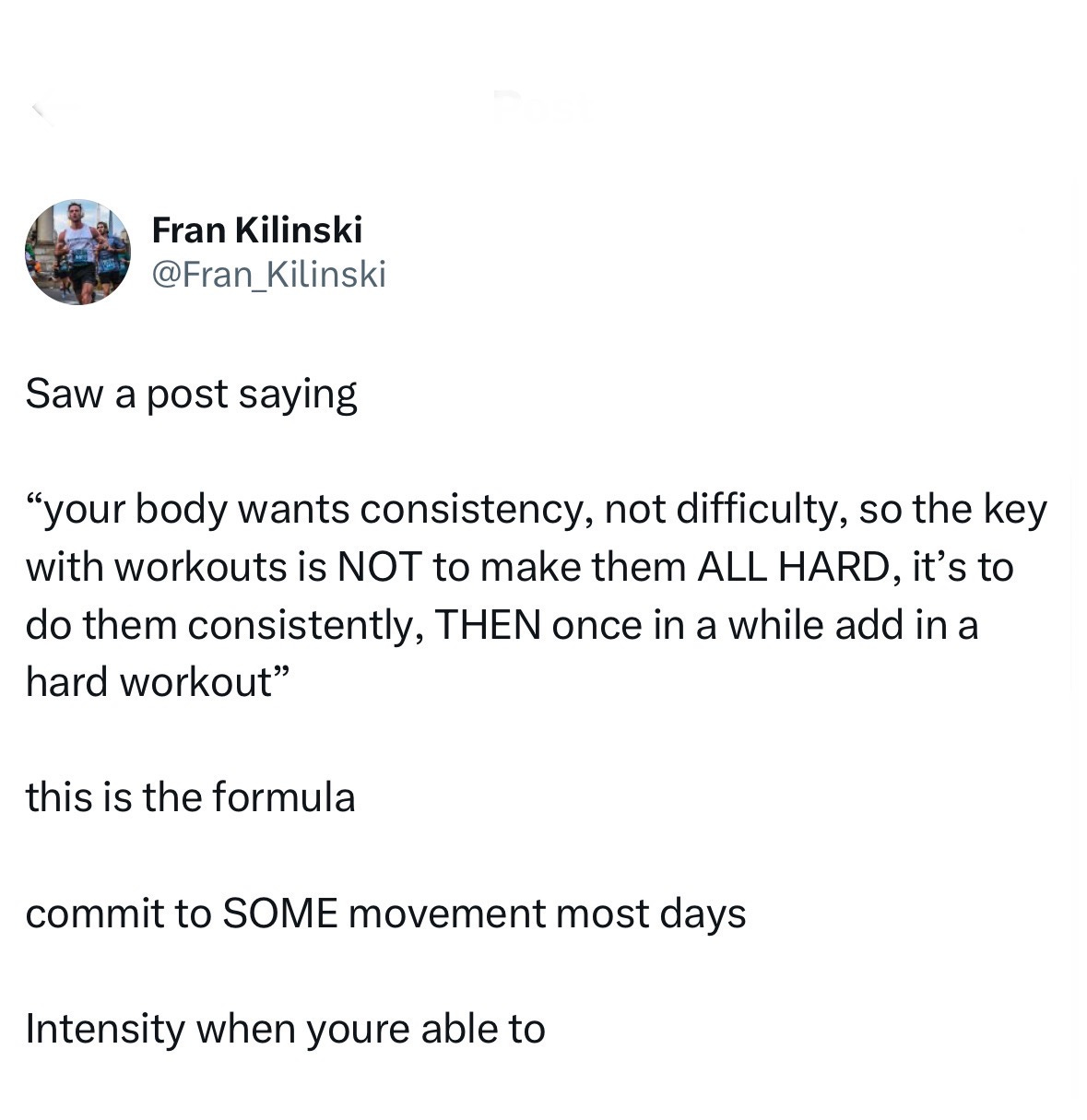🥇Here’s What Wins The Fitness Olympics
Of all the variables, prioritize this one.

Lots of things matter in your fitness routine. That’s why people give up easily.
Schedule, intensity, constant progression, structured rest, smart exercise selection, a nice mix of strength and cardio…
Seems like a lot to keep track of, no?
Many non-fitness professional gym goers — and even some fitpros — have arguments about what the most important factor for seeing results is.
Is it diversifying your exercises?
Is it diet?
Is it training intensity?
Is it something else?
These are all valid strategies for moving the needle forward, but not all of these strategies work for everyone.
🥇Here’s What The Most Valuable Fitness Variable Is
What seems (to me, at least) to be the most scalable, reliable indicator of pushing fitness forward is consistency.
How often can you get into the gym and do the workouts consistently?
How well can you scale these workouts over time and keep coming back for more challenges?
Sure, intensity matters, but I believe it’s easier to overshoot and get injured than undershoot, even if many people do chronically undershoot (something my Saturday newsletter for paid subscribers discussed).
Variability and diversifying matters, until you become a jack of all trades and master of none. Too much variability = no skill development.
Diet is certainly a key part, but only if it’s consistent.
This pillar of fitness needs to be your main focus.
And while you can consistently spin your wheels, it’s easier to come to the realization that no progress is happening than to overdo it, get hurt, and then be scared to train hard again.
🤜 Why Intensity Is A Trip
Coming in at second place has to be intensity.
Don’t get me wrong. Showing up every day is important.
But showing up every day and dogging it 4 out of 5 days is a surefire path to average.
You need to go hard fairly often, too.
But…you can pretty easily damage your ability to recover by going too hard too fast, especially if you’re a beginner.
Last week, I posted a thread about this that saw some great feedback and gave some of my clients and followers alike a lot of closure.
The unsexy part about consistency, while it takes away the danger of over-intensifying, is that it takes grueling amounts of time.
Yesterday, a client told me I looked leaner, but I only just noticed it.
The truth, I told her, was that I’ve been trying to lean out for 1.5 years now.
But I’m only just now seeing the payoff of it.
That’s not too dissimilar from some Olympians and how they train, too, yanno.
The meme above is funny (to anyone who writes or reads a lot), but the man on the left, Yusuf Dikec, 51, won his first Olympic medal in his fifth Olympics.
That’s 16 years of work for one moment of glory.
In the same vein, though, don’t get caught up comparing yourself to Olympians, either.
I read a great newsletter from my friends at Thrive25 last summer, a newsletter you should definitely also subscribe to, that puts things into perspective about Olympians.
They train hard for their moments of glory, but even their shortcomings are incredible achievements.
Paradoxical as it may sound, these are the best athletes in the world.
They might be upset about missing a medal or podium time by seconds or inches, but what they’ve done is still an achievement of almost immeasurable standards.
We can’t hold ourselves to standards of perfection.
But we can be consistent.
We can learn to fall in love with the process of working toward something, even if the result isn’t immediate or even noticeable after some time.
See you all this weekend.




